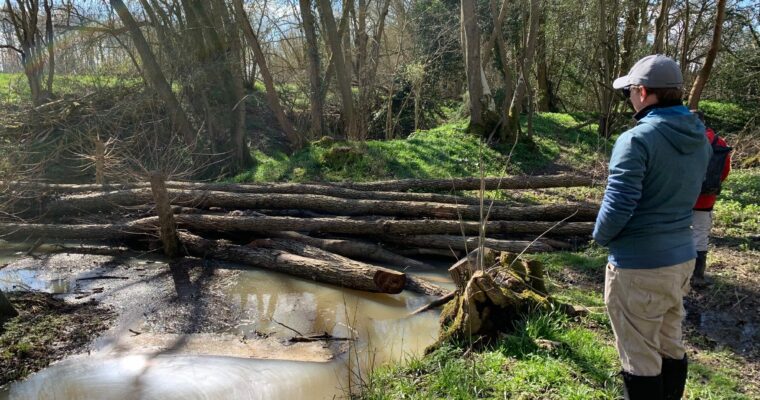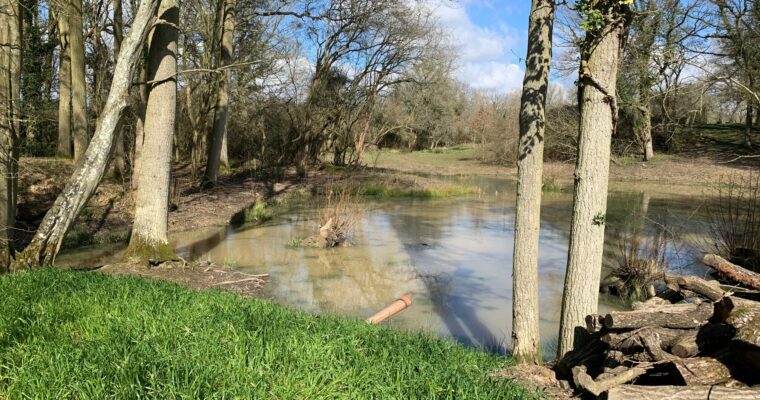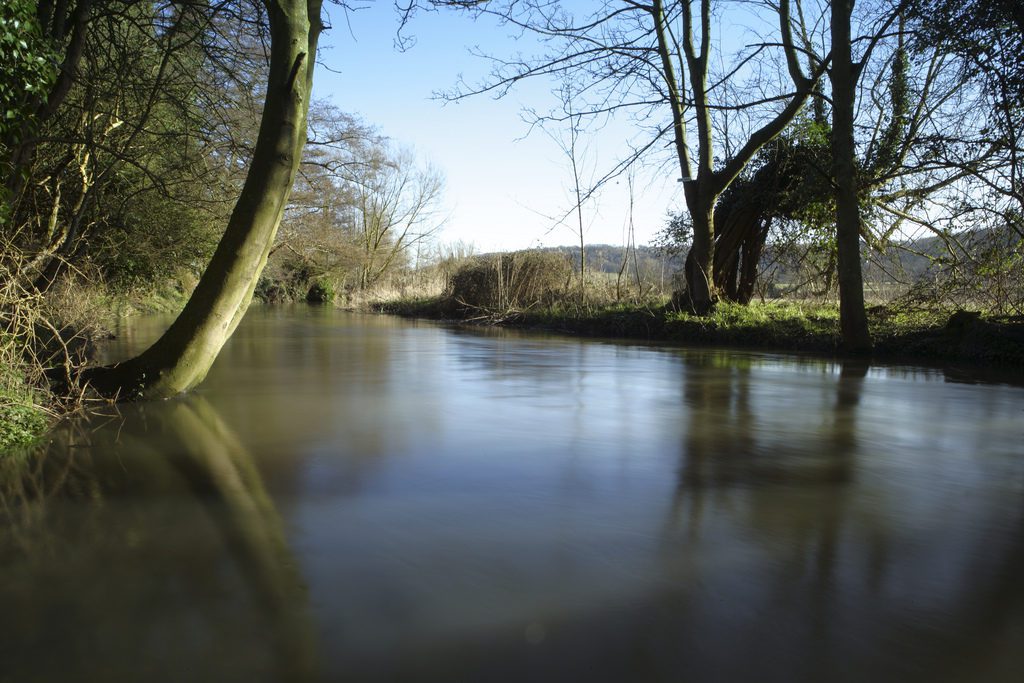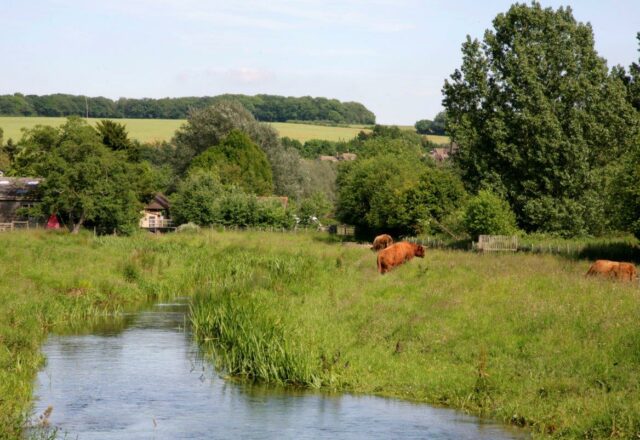The Kent Downs National Landscape team is helping Defra design the new Environmental Land Management Scheme. We ran three Tests and Trials covering Natural Flood Management, Viticulture (grape-growing), and Accessibility and invited farmers and landowners to participate and help co-design them. The evidence and recommendations from these Tests and Trials were submitted to Defra in 2021 and will help shape the way payments are made to farmers and landowners from 2024 onwards.

The Natural Flood Management (NFM) Test and Trial reported to Defra in June 2021.
The project combined the results of recent research with engagement of farmers, to incorporate best practice in water management on farmland (addressing both flood and drought risk) into Environmental Land Management design to answer the key questions:
1. How can we identify the places where NFM is most effective?
2. How can farms work together in clusters to achieve results across a whole catchment?
3. How can we make sure the landscape is positively impacted by NFM?
Five Key Findings

The final report for this Test and Trial gives more detail about the processes that we went through to answer these questions as well as the results of landscape modelling along with the farmer interviews and workshops.
1. Catchment Based Advisers will be essential to provide the levels of advice, reassurance, support and collaboration needed to avoid the low take-up levels of NFM measures experienced in Countryside Stewardship.
2. The use of models can aid the understanding of the best places to locate NFM measures within a catchment. Additionally, information can be incorporated into these GIS based models giving information to advisers and farmers about payment rates for different features, other considerations such as protected species, consents and landscape character issues. The creation of these models at a catchment scale needn’t be cost prohibitive.
3. Some NFM measures such as soil improvement can be applied universally through the Sustainable Farming Incentive whilst others such as leaky dams are more suited to promotion in targeted catchments or sub-catchments.
4. Flexibility of scheme agreements is needed in order to maximise the take-up rate of NFM actions. There needs to be provision to add NFM features to agreements in order to allow farmers to experiment and gain confidence and to allow Catchment Based Advisers to promote NFM with incentives through the schemes.
5. Payment rates need to reflect the multiple benefits that are generated by NFM measures. The public goods of many NFM measures are not restricted to flood mitigation.
Report & Appendices
Natural Flood Management Test and Trial Final Report
This Final Report and Appendices have been submitted to Defra
Natural Flood Management Final Report (PDF, 3 MB)
Appendices
Appendix-1-NFM-Test-and-Trial-HydroloGIS-in-the-Darent-Valley (PDF, 640 KB)
Appendix-2-NFM-Test-and-Trial-Sensitivity-of-landscape-character-to-NFM-measures (PDF, 2 MB)
Appendix-3-NFM-Test-and-Trial-Management-Information-Tool (XLSX, 142 KB)
Appendix-4-NFM-Test-and-Trial-Findings-from-landowner-workshops-for-publication (PDF, 752 KB)
Appendix-5-NFM-Test-and-Trial-Assessment-of-NFM-Measures (PDF, 919 KB)
Appendix-6-NFM-Test-and-Trial-Design-Proposal (XLSX, 48 KB)





